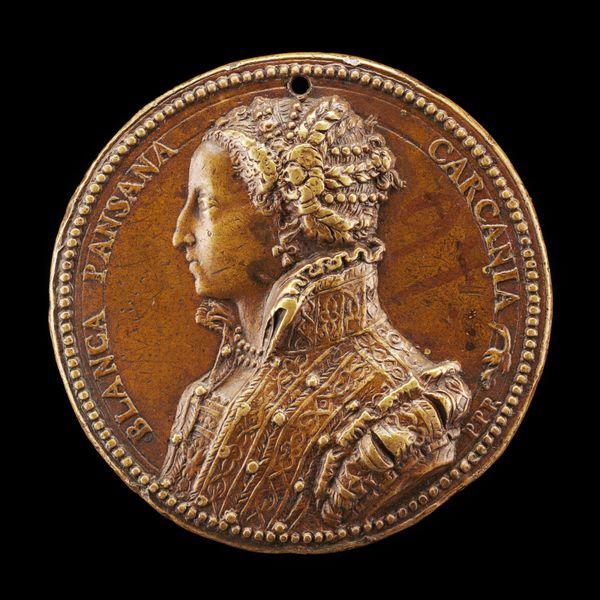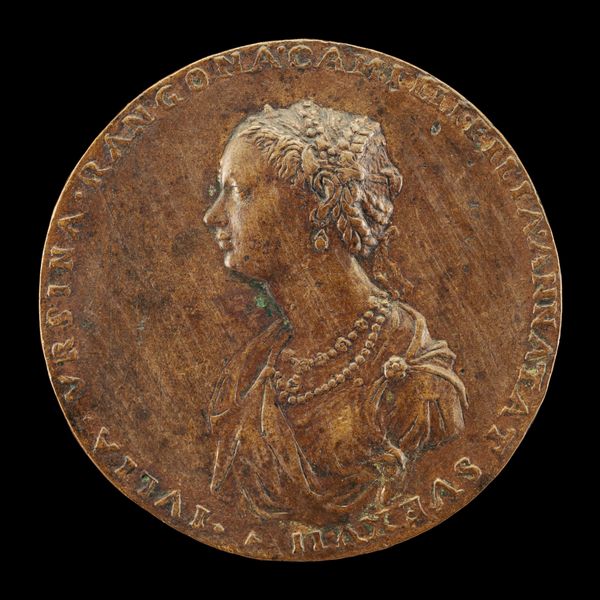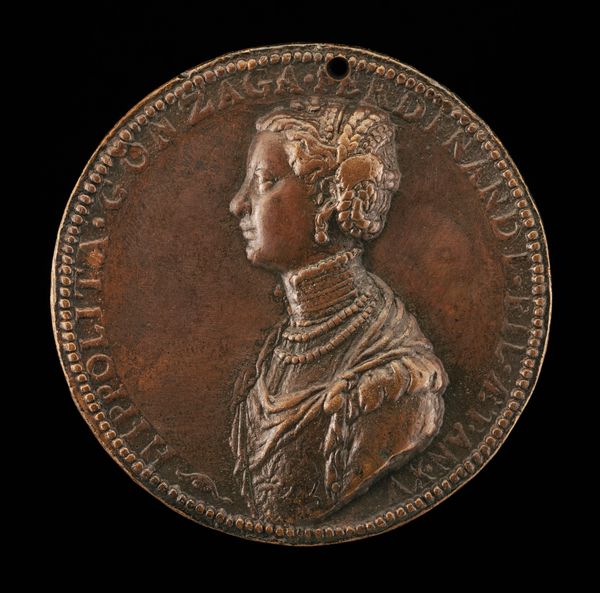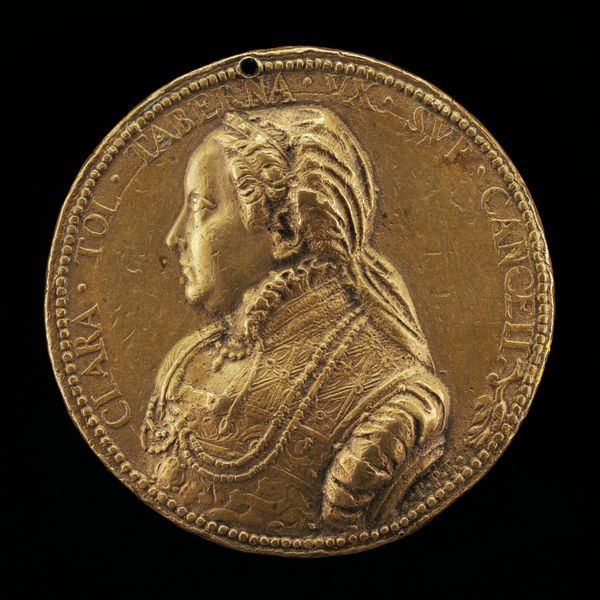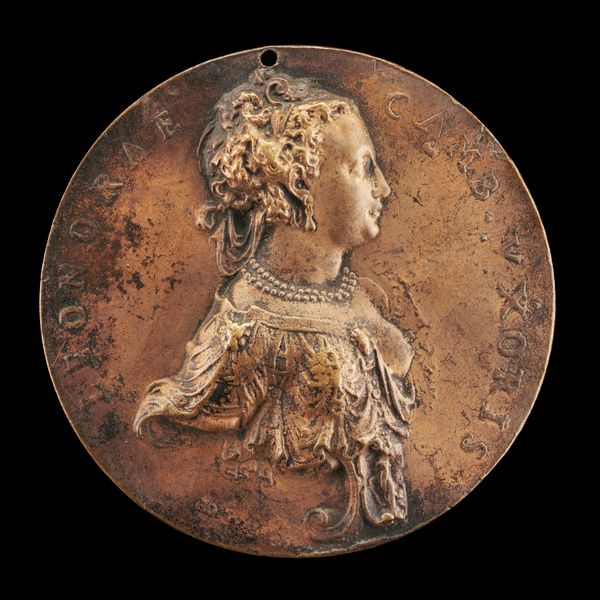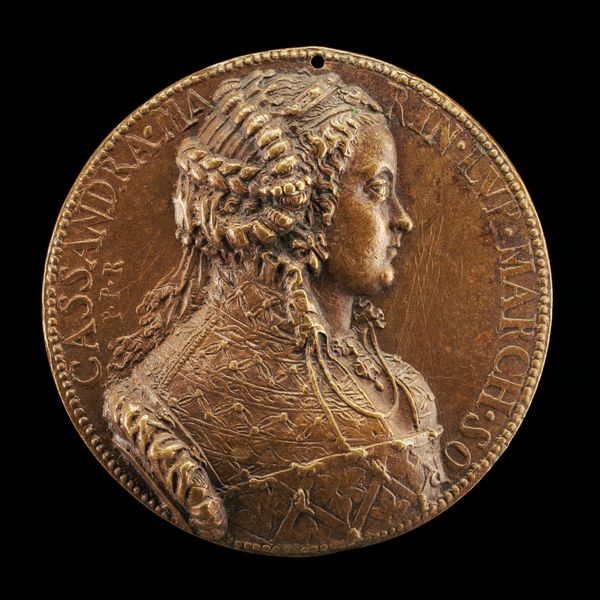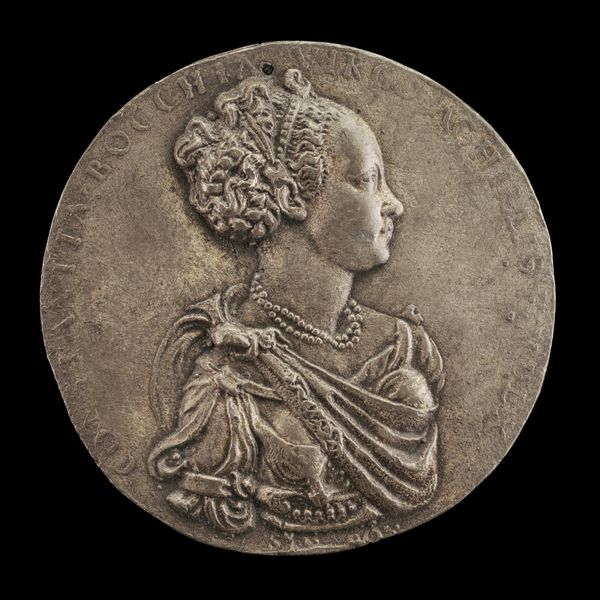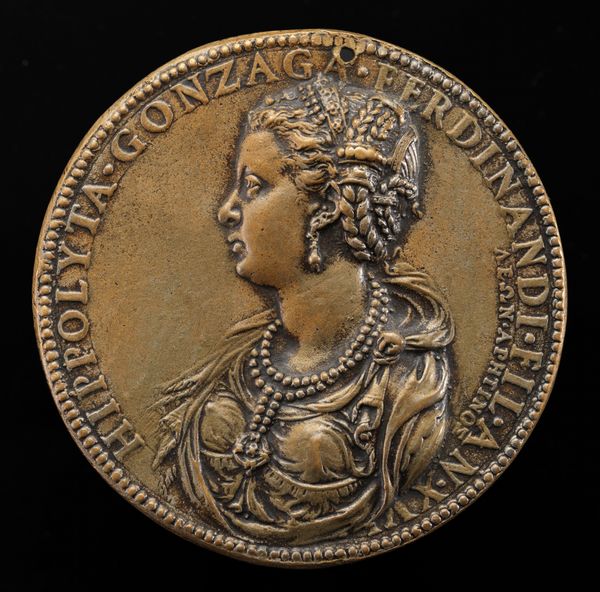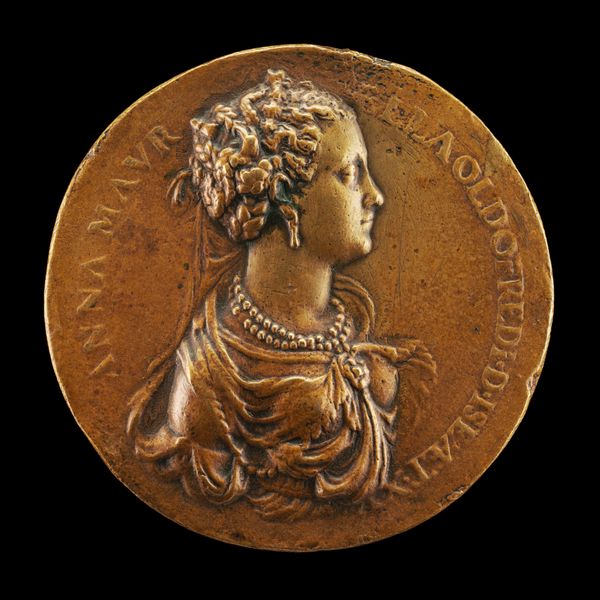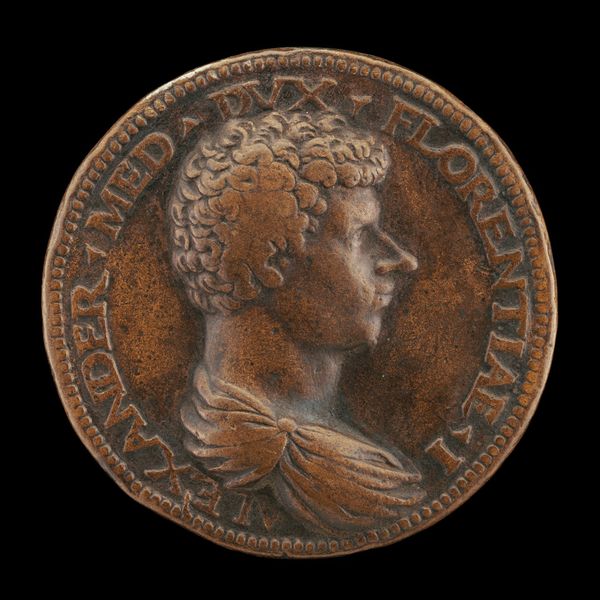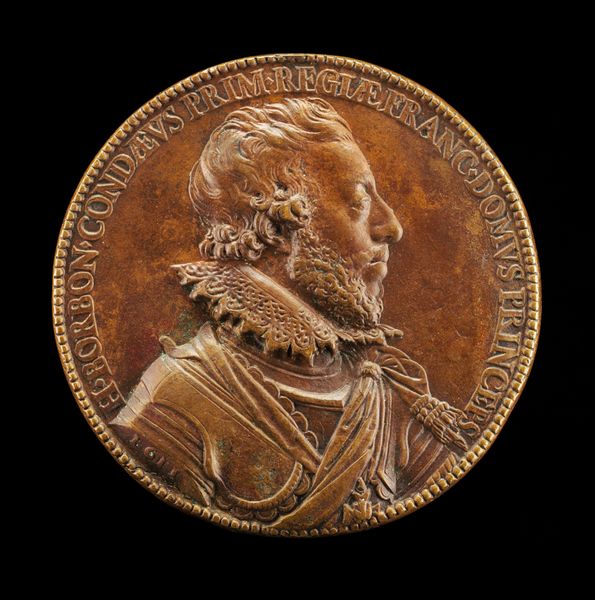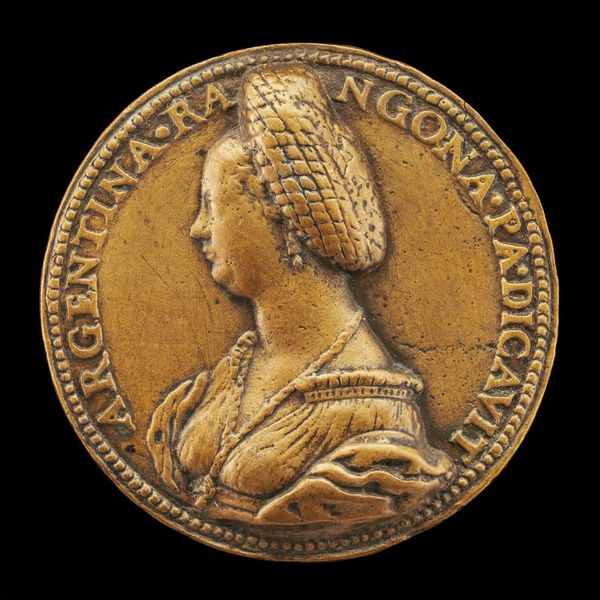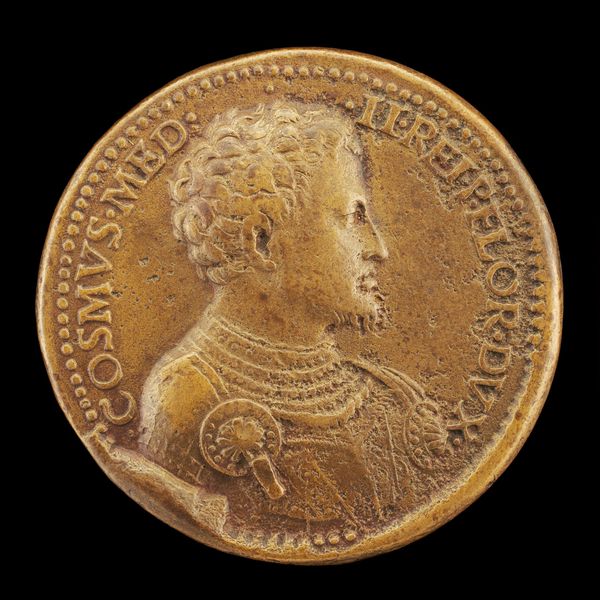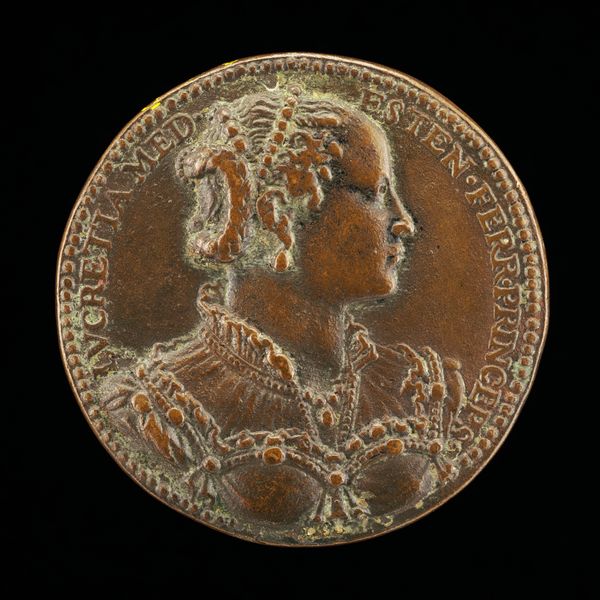![Barbara Borromeo, died 1572, Wife of Camillo Gonzaga 1555 [obverse] by Pier Paolo Galeotti](/_next/image?url=https%3A%2F%2Fd2w8kbdekdi1gv.cloudfront.net%2FeyJidWNrZXQiOiAiYXJ0ZXJhLWltYWdlcy1idWNrZXQiLCAia2V5IjogImFydHdvcmtzL2FiYWQxMDRkLTEyOGQtNGU2YS04ZTVlLTVjN2JmMTk3ZDUwYi9hYmFkMTA0ZC0xMjhkLTRlNmEtOGU1ZS01YzdiZjE5N2Q1MGJfZnVsbC5qcGciLCAiZWRpdHMiOiB7InJlc2l6ZSI6IHsid2lkdGgiOiAxOTIwLCAiaGVpZ2h0IjogMTkyMCwgImZpdCI6ICJpbnNpZGUifX19&w=3840&q=75)
Barbara Borromeo, died 1572, Wife of Camillo Gonzaga 1555 [obverse] 1555
0:00
0:00
relief, bronze, sculpture
#
portrait
#
medal
#
sculpture
#
relief
#
bronze
#
sculptural image
#
sculpture
#
italian-renaissance
Dimensions: overall (diameter): 4.91 cm (1 15/16 in.) gross weight: 31.62 gr (0.07 lb.) axis: 12:00
Copyright: National Gallery of Art: CC0 1.0
Curator: This exquisite bronze relief sculpture, created in 1555 by Pier Paolo Galeotti, immortalizes Barbara Borromeo, wife of Camillo Gonzaga. Its compact scale focuses the eye. The relief is detailed, creating a visually arresting image. Editor: The subdued coloration immediately gives it a weighty, historical feel. Beyond a likeness, what narratives can we tease out, considering Barbara's role as a woman of power during the Renaissance? Curator: The materiality of bronze is crucial. Consider the casting process itself – the skill, the labor involved in transforming raw materials into this refined object. This was a luxury item. How was Galeotti supported to make such intricate work? And who had access to see or own such objects? Editor: Exactly. Her elegant attire and jewelry denote wealth, and a marital connection. Notice the inscription: “Barbara Borromeo Gonzaga, 26 years." Galeotti made several medals honoring individuals associated with the Gonzaga court. What position did they occupy and how was it beneficial for the artists involved? The Gonzagas were obviously making powerful and calculated decisions through collecting artwork. Curator: Indeed, the level of detail reflects immense skill. Observe how light plays across her face and gown – a direct result of Galeotti's ability to manipulate the material. This wasn't just portraiture; it was a demonstration of artisanal expertise within a courtly setting. The artist’s virtuosity reflects the patron’s affluence. Editor: It’s also worth pondering the intended audience. Was this intended for private contemplation, or perhaps political networking? Understanding its circulation reveals much about societal values around representation and gender. Who did Barbara want looking at this and thinking about her power? Curator: Exploring the intersection between Galeotti's craftsmanship and Borromeo’s position really opens our understanding. Considering labor, cost, materials, distribution... Editor: Precisely, and the stories embedded within the relief can reflect much of women's position in Renaissance Europe, the political role of noble marriage.
Comments
No comments
Be the first to comment and join the conversation on the ultimate creative platform.
